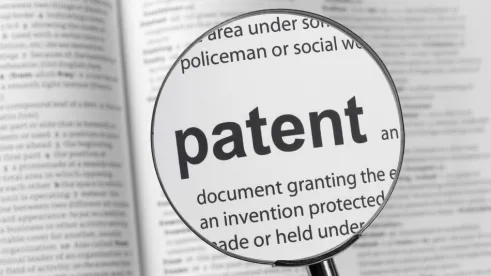Addressing issues of obviousness and the proper scope of inter partes review (IPR) reply briefs, the US Court of Appeals for the Federal Circuit upheld a Patent Trial and Appeal Board (PTAB or Board) IPR decision finding the patent at issue valid. Intelligent Bio-systems Inc. v. Illumina Cambridge LTD, Case No. 15-1693 (Fed. Cir., May 9, 2016) (O’Malley, J).
Intelligent Bio-Systems (IBS) filed an IPR challenging the claims in Illumina Cambridge’s patent for a DNA sequencing method as obvious. The patent involved nucleotides, the building blocks of DNA strands, that have been modified with a removable azido “protecting group” that prevents each nucleotide from binding to the next nucleotide in the strand until it is removed (deblocked). IBS argued that prior art taught a method of DNA sequencing using nucleotides with protecting groups and that other prior art taught the use of azido groups. Illumina responded that, in the prior art, successful sequencing required 100 percent deblocking, while the disclosed azido groups achieved less than 80 percent removal. The PTAB found that the lower deblocking efficacy disclosed in the prior art eliminated any expectation of success or motivation to combine the prior art. IBS appealed.
On appeal, the Federal Circuit found that the PTAB erred by basing its standard for success on the prior art rather than the claims of the patent. Although the prior art considered 100 percent removal necessary for success, the claims in question did not include that limitation. Therefore IBS did not have to prove that such a result would be reasonably expected. However, the Court agreed that 100 percent deblocking was relevant to whether one of ordinary skill in the art had the requisite motivation to combine the prior art, as IBS’s sole argument was that a person of skill would be motivated to combine the prior art to achieve 100 percent deblocking. In light of the evidence that the azido group would achieve less than 80 percent deblocking, IBS had failed to provide a credible explanation for how the combination of prior art would achieve this goal.
Recognizing this gap in its case, IBS attempted introduce new arguments and evidence in its reply brief to the PTAB, arguing that a person of skill would know to modify the procedure in the prior art to create the claimed patent. But the PTAB disregarded IBS’s reply brief, finding that it fell afoul of 35 USC § 312(a)(3) and 37 CFR § 42.23(b), which require that all arguments be included in the initial petition and that replies may only respond to arguments raised in the corresponding brief. The Federal Circuit agreed that, because IBS initially argued that the prior art was sufficient to make the claimed invention, but provided new arguments and evidence in its reply, it had failed to provide all its arguments with particularity in its initial petition. This was an improper new rationale for motivation to combine, so the PTAB did not need to consider it in its deliberations. Furthermore, because the PTAB is not required to “parse the reply brief to determine which, if any, parts of that brief are responsive and which are improper,” the entire brief could be disregarded.



 />i
/>i
